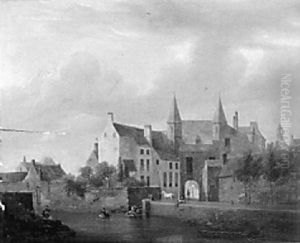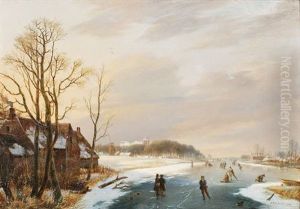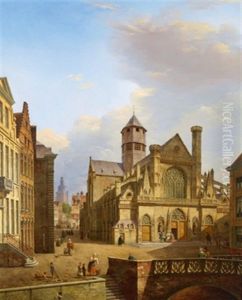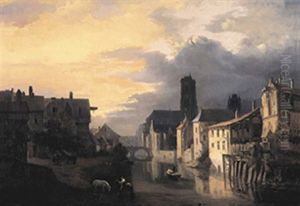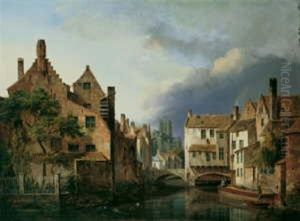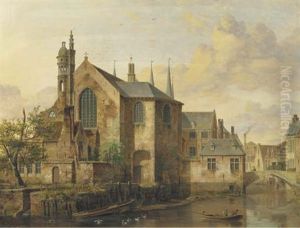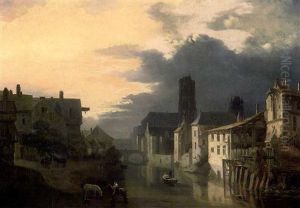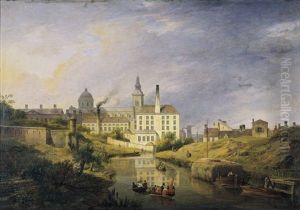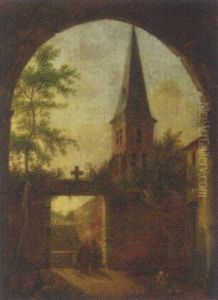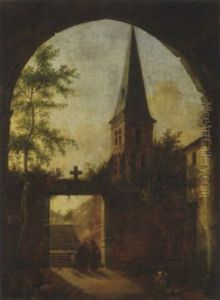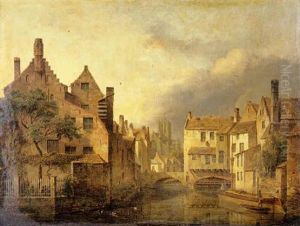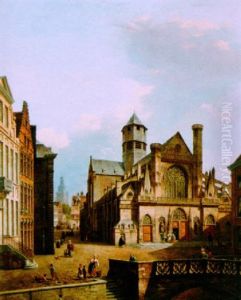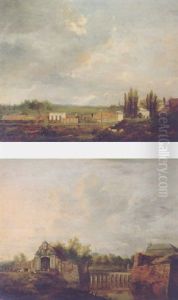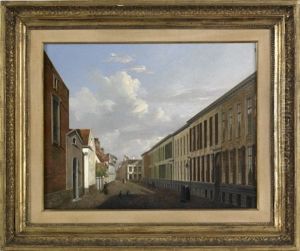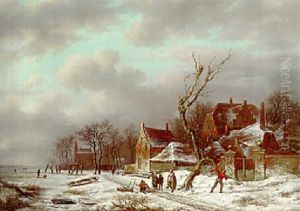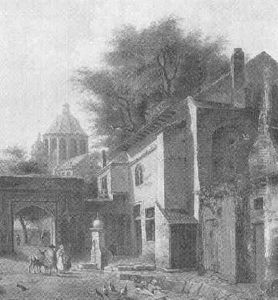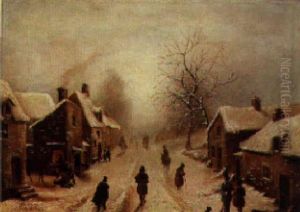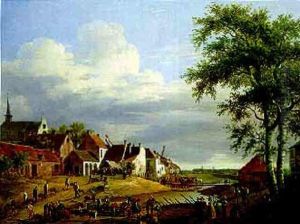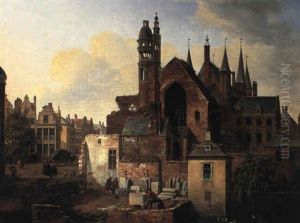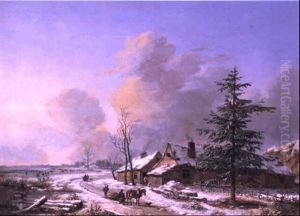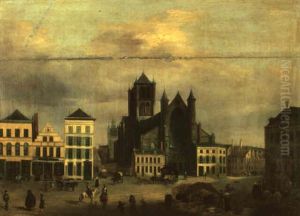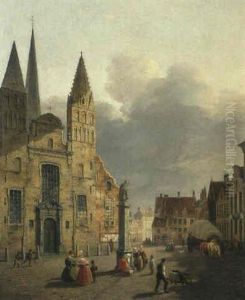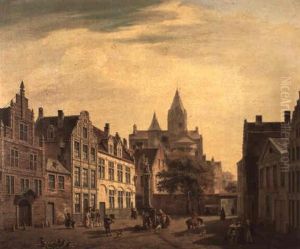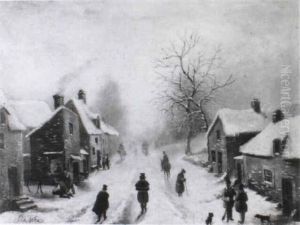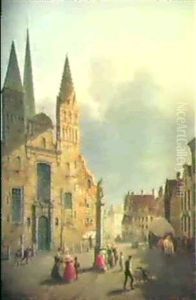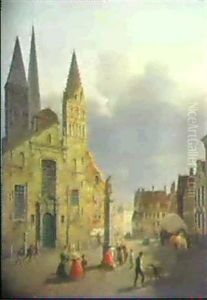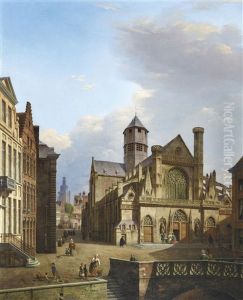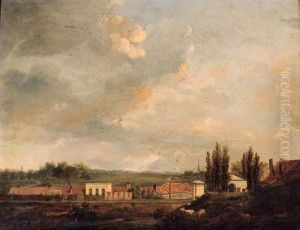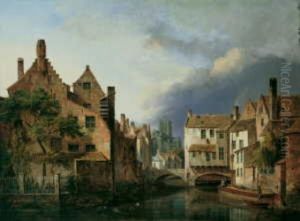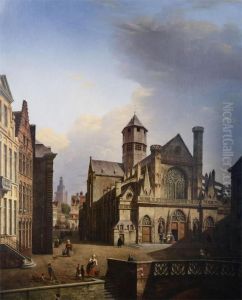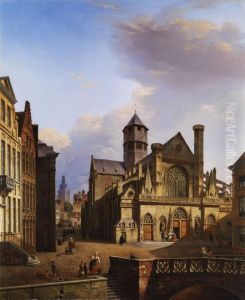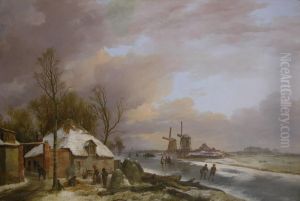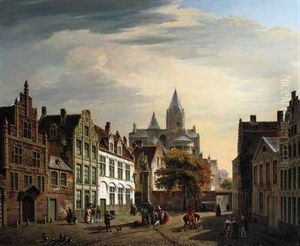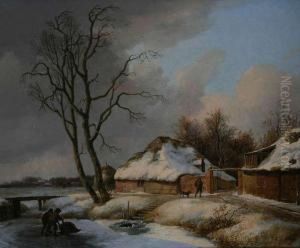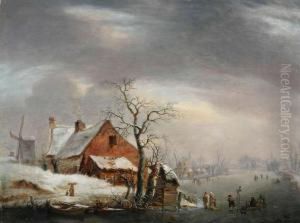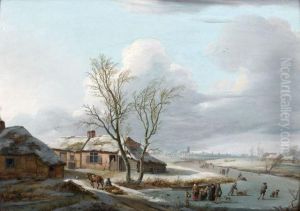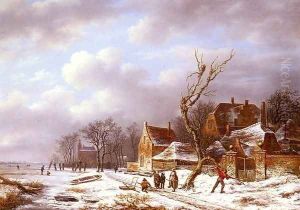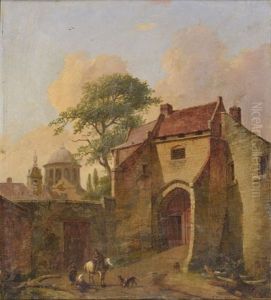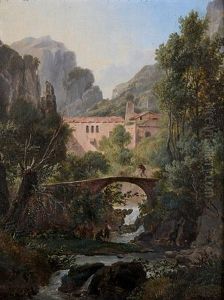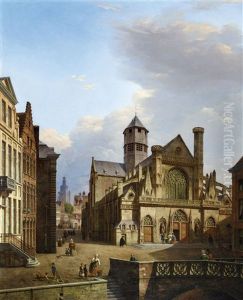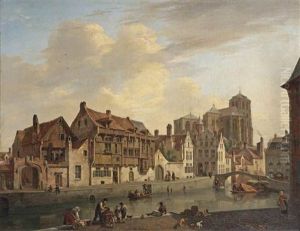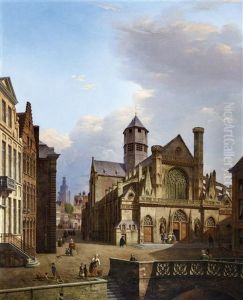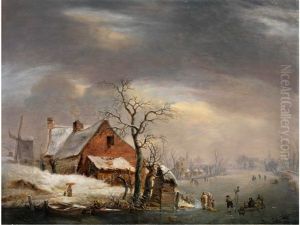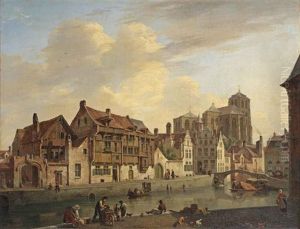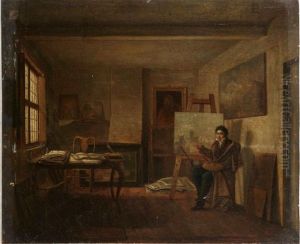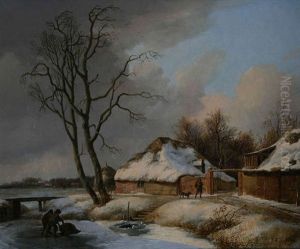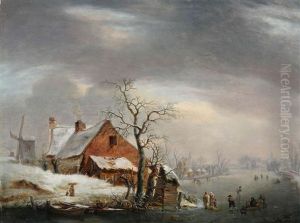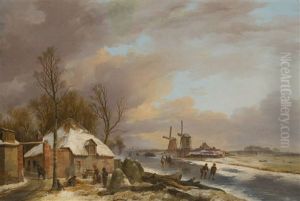Pierre Francois de Noter Paintings
Pierre Francois de Noter was a notable Belgian artist born in the late 18th century, specifically in 1779, and he lived until 1842. His artistic career flourished during a period of significant change in Europe, marked by the aftermath of the French Revolution and the rise and fall of Napoleon. De Noter was known primarily for his detailed interior scenes as well as his architectural paintings, which captured the essence of European culture and lifestyle during his time.
De Noter's early life was steeped in an environment that valued the arts, which allowed him to cultivate his skills from a young age. He was part of a family with artistic inclinations, which undoubtedly influenced his career path. His training and early influences are not extensively documented, but it is clear from his work that he had a strong foundation in the techniques and styles prevalent in late 18th and early 19th-century European art.
Throughout his career, Pierre Francois de Noter was highly regarded for his ability to depict interior scenes with a remarkable level of detail and realism. His works often featured domestic interiors and churches, showcasing not just the architectural details but also the interplay of light and shadow, which brought his compositions to life. This mastery of light and shadow, combined with his precise depiction of architectural elements, made his work sought after by collectors and art enthusiasts.
In addition to his interior and architectural subjects, de Noter also ventured into landscape painting, although these works were less prominent in his oeuvre. His landscapes, like his interiors, were marked by a keen observation of detail and a profound appreciation for the natural and built environment.
Pierre Francois de Noter's contribution to the art world during his lifetime was significant, although he may not be as widely recognized today as some of his contemporaries. His paintings provide a window into the European interior and architectural design of his era, offering insight into the daily life and aesthetic preferences of the time. Despite the lack of extensive documentation on his life, de Noter's work continues to be appreciated for its technical skill and historical value.
De Noter passed away in 1842, leaving behind a legacy of art that continues to be studied and admired for its depiction of 19th-century European culture and lifestyle. His paintings are held in various collections and museums, serving as a testament to his skill and dedication to his craft. Through his detailed and atmospheric works, Pierre Francois de Noter has earned a lasting place in the history of European art.
